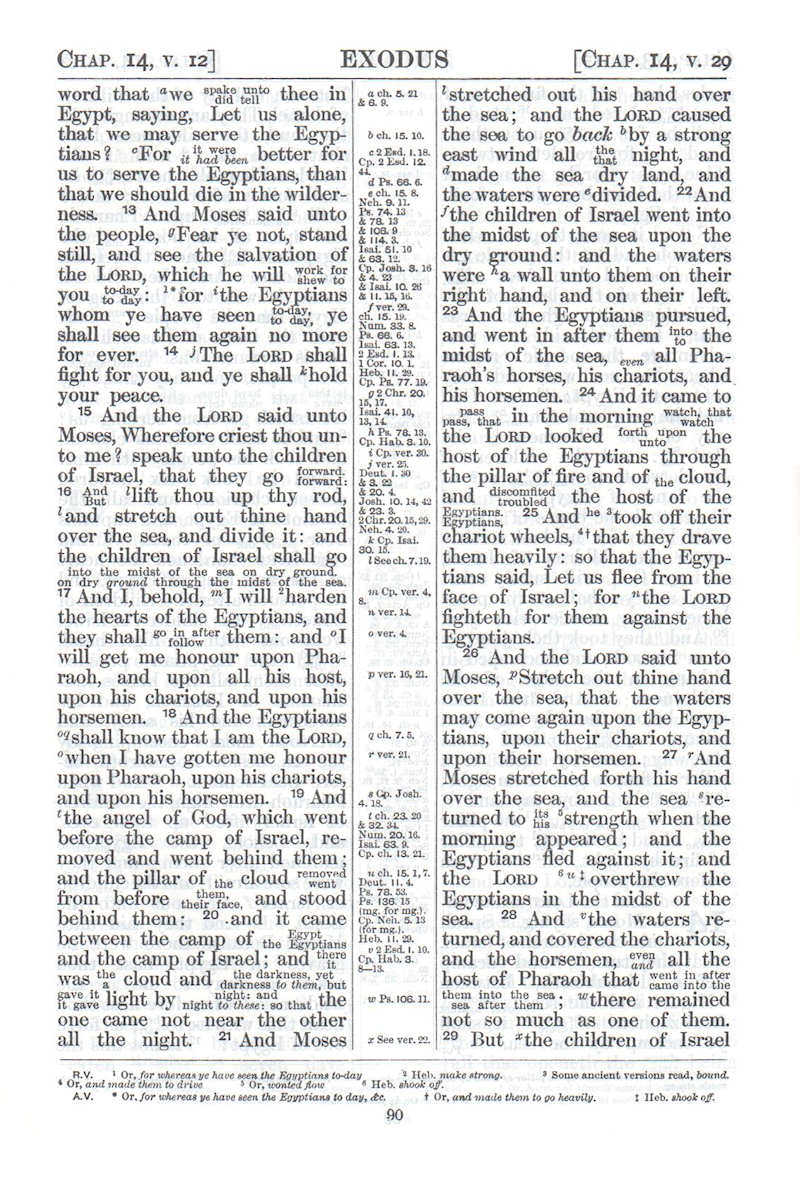
| Bible Research > English Versions > 19th Century > ERV > Interlinear edition |
The Interlinear Bible: The Authorised Version and the Revised Version, Together with the Marginal Notes of Both Versions and Central References. Cambridge: Cambridge University Press, 1906.
This edition presents a convenient view of the differences between the English Revised Version and the King James Version. In 2006 it was made available online at the Internet Archive site, at the address www.archive.org/details/interlinearbibl01unkngoog.
The preface of the edition consists of the following paragraphs.
In this edition the large type represents the agreement of the Revised and Anthorised Versions. When the two Versions differ, the renderings of both are printed in small type; those of the Revised Version in the upper line, and those of the Authorised Version in the lower line A blank in the upper or lower line indicates the absence of any corresponding words in the Revised Version or the Authorised Version respectively. Thus the large type read in oonjunction with the upper line of small type gives the continuous text of the Revised Version, and read in conjunction with the lower line of small type it gives the continuous text of the Authorised Version.
Where the variations could not conveniently be indicated by the use of upper and lower lines, they have been pointed out by other means, such as the insertion of the words "[R.V. only".
With the exceptions specified below, all the variations have been exhibited, including those of spelling and punctuation. In the case of variations of punctuation, the word preceding the stop has been twice printed for the sake of clearness even when it is identical in the two Versions: thus in Luke i. 3 the upper line "Theophilus;" shews the punctuation of the Revised Version, the lower line "Theophilus," that of the Authorised Version.
The variations which have not been exhibited are as follows:
(1) Variation of arrangement. The division of the text into paragraphs adopted in the R.V. has been followed, with the consequent changes in the use of capitals at the beginning of verses, and the omission of the paragraph marks (¶) of the A.V.
In the poetical books and passages the arrangement of the R.V. in lines, to exhibit the parallelism which is characteristic of Hebrew poetry, has been followed, with similar consequent changes.
The spaces by which a change of subject is indicated in the R.V. also appear without notice.
(2) Matter which forms no part of the text. The headings of the chapters and the headlines of the pages which appear in the A.V. are not given in this edition.
(3) The use of italics. When the only difference between the two Versions consists in the use of italic or roman type, the Revised Version has been followed. To have recorded every variation of this kind would have been to produce an entirely false impression as to the amount of difference between the two Versions. The italics of modem editions of the A.V. are largely due to later editors and not to the translators of 1611; nor is the use of them by any means consistent. The principle which guided the Revisers was, as may be gathered from their Prefaces, to print in ordinary type all words which are plainly implied in the original language and are necessary in English, and to reserve the use of italics for words which do not appear to be distinctly involved in the original.
The central references are those of the edition of the R.V. with references published bv the University Presses in 1898. For all explanations the reader is referred to the Preface prefixed to that edition, which is reprinted at the beginning of this book (p. vii).
The marginal notes of the Revised Version, which form an important part of the Revisers' work, and should by no means be neglected, appear at the foot of the pages with figures prefixed: those of the Authorised Version are placed below them, marked by the signs *, †, etc.

| Bible Research > English Versions > 19th Century > ERV > Interlinear edition |